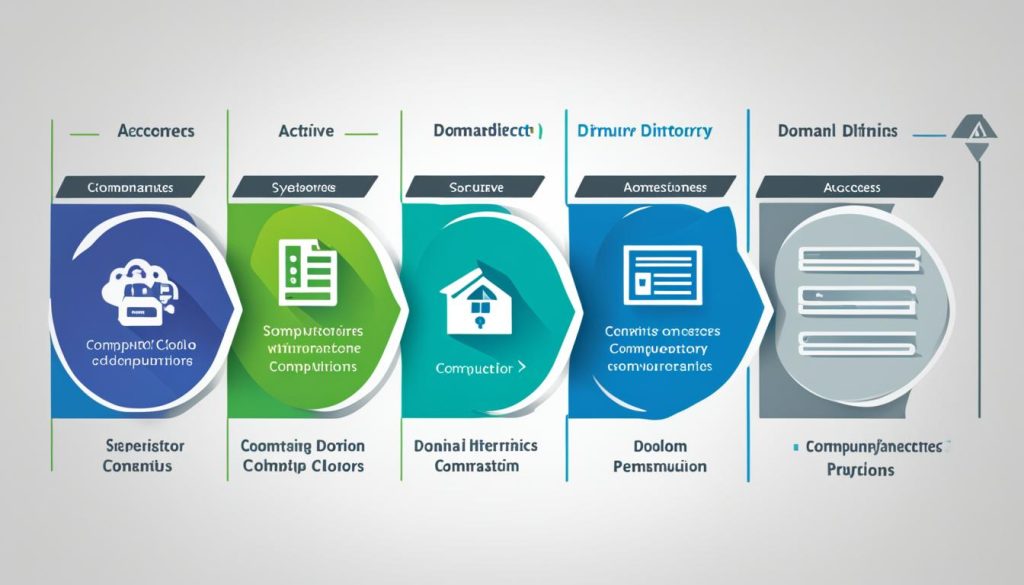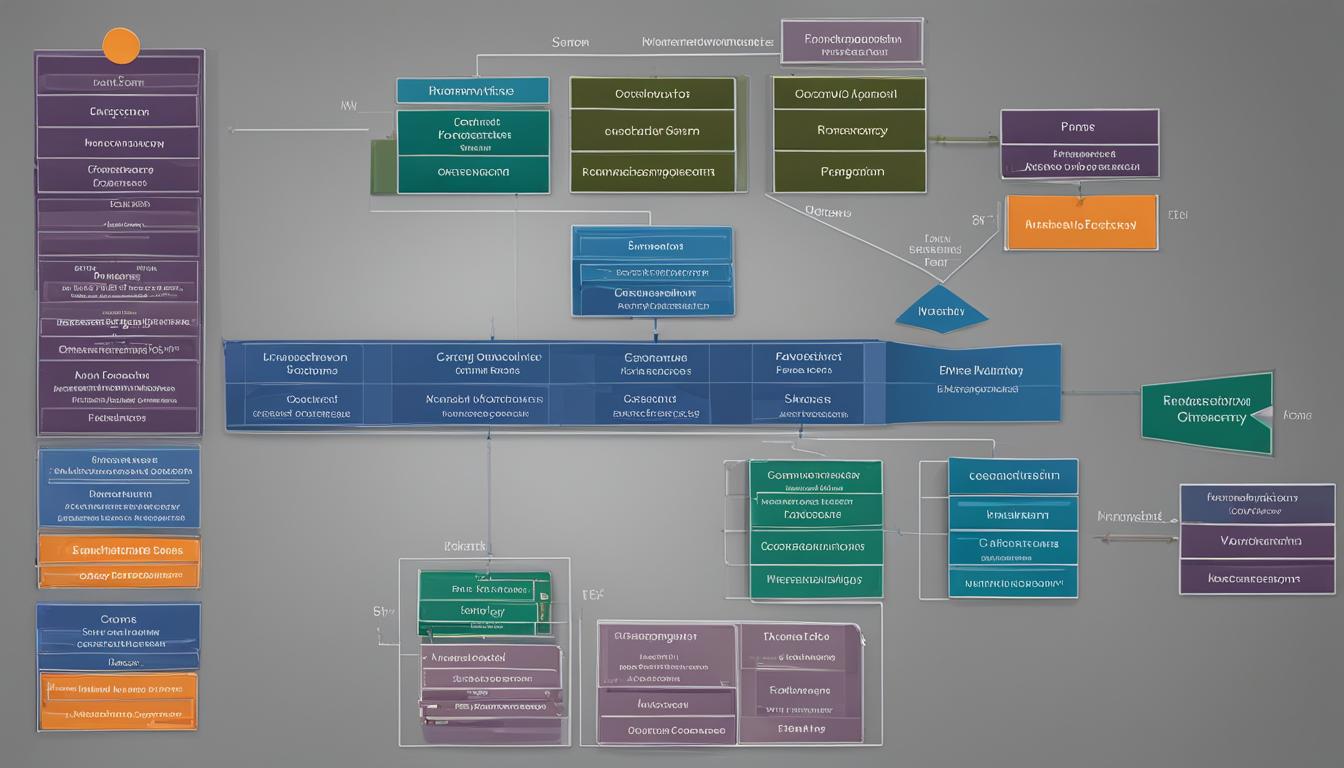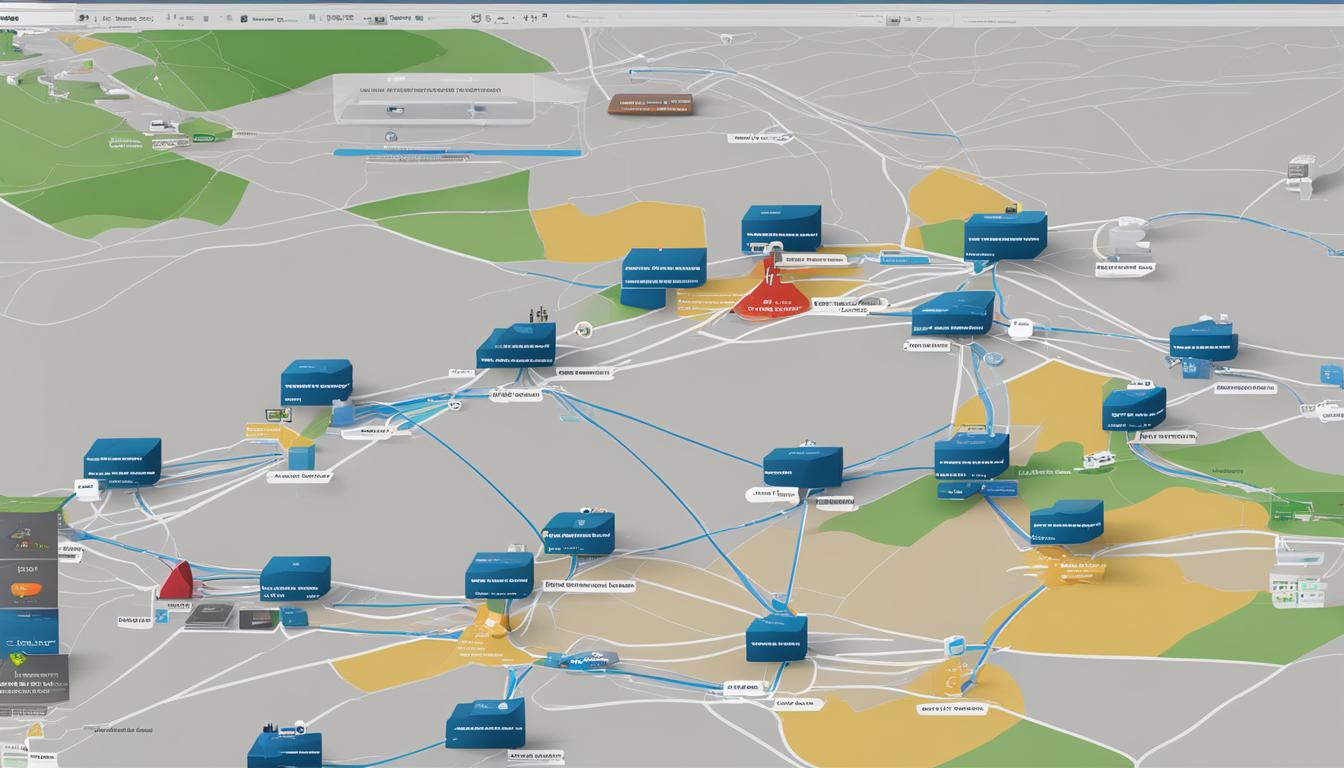What is a domain in computing?
Did you know that every time you access a website, you are interacting with a unique domain? In the vast realm of computing, domains play a pivotal role in organizing network resources and enabling seamless internet connectivity. Understanding domain structures and their administration is essential for IT professionals, network administrators, and anyone seeking to enhance their digital literacy. In this article, we will delve into the definition of a domain in computing, explore different domain types, and uncover the significance of domain and network administration.
Key Takeaways:
- A domain in computing refers to the structure of the internet and the organization of an organization’s network resources.
- Domains are identified by unique IP addresses and are set up using the Domain Name System (DNS), which translates host names to IP addresses.
- In network administration, a domain provides a logical organization of connected physical network resources and users, allowing for centralized control and policy enforcement.
- Domain controllers play a crucial role in maintaining information about network resources, user accounts, and handling authentication requests.
- A network domain allows for efficient resource management, authentication, and authorization of users, regardless of their physical location on the network.
Understanding Internet Domains
Greetings! In this section, I will provide a comprehensive explanation of internet domains, including the domain name system, domain hierarchy structure, and domain security protocols. Let’s dive right in!
Internet domains serve as administrative structures that facilitate the organization, delivery, and accessibility of services on the internet. One of the cornerstone components of the internet is the Domain Name System (DNS), which functions as an extensive directory that translates domain names to IP addresses and vice versa. This translation enables users to access content using easily memorable domain names, rather than complex IP addresses.
The DNS system employs a hierarchical naming structure, with the root domain positioned at the highest level. Beneath the root domain, multiple top-level domains (TLDs) exist, which represent geographic or purpose commonality. Examples of TLDs include .com, .net, and .org, as well as country-specific codes like .ca for Canada.
Individual domains, such as techtarget.com or usda.gov, sit directly beneath the corresponding TLDs. Each domain is identified by a unique IP address, enabling devices to communicate directly with specific domains on the internet.
Domain security protocols are crucial for ensuring the integrity, confidentiality, and availability of domain resources. These protocols safeguard against unauthorized access, data breaches, and other security threats that could compromise the functionality and reputation of a domain. By implementing robust security measures, domain owners can maintain a safe and reliable online presence.
The Domain Hierarchy Structure
To further understand the domain hierarchy structure, let’s visualize it with the following table:
| Level | Example |
|---|---|
| Root Domain | |
| Top-Level Domain (TLD) | .com |
| Second-Level Domain | techtarget |
| Third-Level Domain | blog |
This table illustrates the hierarchical structure of a domain, starting from the root domain at the top and progressing through the TLD, second-level domain, and third-level domain. Each level contributes to the unique identification and categorization of a domain within the broader internet ecosystem.
The Role of Domain Controllers
In a network domain, a domain controller plays a vital role. It is a server that maintains information about network resources, user accounts, and handles authentication requests for access to network resources.
A domain controller is responsible for various tasks, including:
- Replicating directory data with other controllers
- Ensuring the proper functioning of the domain
A domain controller distinguishes a domain from a workgroup. Unlike a workgroup where each device manages its own security and resources, a domain provides centralized control and management of resources.
Benefits of domain controllers:
- Set policies: Administrators can set policies to control access and manage user accounts from a single point.
- Centralized control: Resources can be managed centrally, making it easier to enforce security measures and apply updates across the network.
- Enhanced security: A domain controller adds an additional layer of security by centralizing authentication and authorization processes.
- Efficient resource management: With a domain controller, administrators can efficiently manage network resources and allocate them based on organizational needs.
| Domain | Workgroup |
|---|---|
| Centralized control and management of resources | Decentralized control and management, each device manages its own resources |
| Enables policy implementation and access control | No centralized policy enforcement |
| Enhanced security with centralized authentication | No centralized authentication mechanism |
Network Domains and Resource Management
In the context of computer networks, a network domain refers to the logical organization of connected physical network resources and users. It provides a flexible structure for managing network resources, including servers, desktops, printers, and other devices, under a single administrative umbrella.
Administrators can apply policies at a granular level, control user access, and manage resources based on the needs of the organization. A network domain enables efficient resource management, authentication, and authorization of users. It allows users to access approved resources regardless of their physical location on the network and facilitates communication and collaboration among users.
Benefits of Network Domain
- Centralized resource management and control
- Granular security and access policies
- Efficient resource allocation and utilization
- Streamlined communication and collaboration
- Enhanced network performance and reliability
By implementing network domains, organizations can optimize their network infrastructure, ensure the security of resources, and enable effective user management.

| Network Domain Components | Description |
|---|---|
| Server | A network domain includes server resources that host and manage various applications, services, and data. Servers play a crucial role in resource allocation and access control. |
| Desktop | Desktop computers are part of a network domain and can be centrally managed by network administrators. They provide access to shared resources and applications. |
| Printer | Printers in a network domain allow users to print documents and share printing resources efficiently. Network administrators can manage printer access and settings. |
| User | Users within a network domain have defined roles and permissions. Network administrators can control user access, assign privileges, and enforce security policies. |
Active Directory Domains
Active Directory is a widely used domain management system designed by Microsoft for Windows domain networks. It stores information about network resources and users, providing a logical and hierarchical view of the directory.
Active Directory offers integrated security, including login authentication and access control to directory objects. It plays a crucial role in ensuring the privacy and security of sensitive information within the network.
Within an Active Directory structure, one or more domain controllers are responsible for managing resources and users across the network.
Active Directory uses a hierarchical structure, with the root domain at the top. Beneath the root domain, there can be multiple subdomains, each with its own set of resources and users. This hierarchy helps organize and manage network resources efficiently.
| Benefits of Active Directory Domains |
|---|
| Centralized management of network resources |
| Enhanced security through access control and authentication |
| Efficient resource location and data replication |
| Enables scalability and expansion of network infrastructure |
By implementing Active Directory, organizations can streamline their network administration processes, improve security, and ensure seamless access to resources for authorized users.

Domain Knowledge in Industry
In the technology industry and other fields, domain knowledge plays a crucial role in enhancing expertise beyond basic skill sets. It refers to specialized knowledge in a specific field or industry, encompassing a deep understanding of the domain’s intricacies. As an industry professional, I am well aware of the importance of domain knowledge and its impact on success.
For example, in software engineering, having domain knowledge in a particular application’s operating environment or end-user interactions can give a competitive advantage. It allows me to better understand the needs and challenges of the users, resulting in more effective and user-friendly solutions.
Domain knowledge is highly valued in various roles, including project management and software development. When working on projects in a specific domain, my expertise allows me to navigate the complexities and deliver solutions that align with the domain’s requirements. This helps ensure that the final product meets both business objectives and user expectations.
Industry-specific domain knowledge also enables effective communication and collaboration with stakeholders. It allows me to understand their perspectives, needs, and requirements, making it easier to build strong working relationships and achieve successful outcomes. This collaborative approach enhances productivity and facilitates the achievement of project goals.
Having a solid foundation of domain knowledge is essential, especially when dealing with industry-specific challenges and trends. Staying updated with the latest developments in a particular domain enables me to provide informed insights, make data-driven decisions, and deliver innovative solutions to clients and stakeholders.
Industry-specific domain knowledge is a key differentiator in the competitive landscape of today’s technology industry and beyond. It empowers professionals to provide valuable expertise, deliver high-quality solutions, and drive success in their respective domains.
| Benefits of Domain Knowledge in Industry |
|---|
| Enhanced understanding of user needs and challenges |
| Competitive advantage in specialized roles |
| Effective communication and collaboration with stakeholders |
| Ability to navigate domain-specific complexities |
| Informed decision-making based on industry trends |
The Importance of Domain Names
Domain names play a crucial role in the digital world, serving as unique identifiers for internet resources such as websites and email services. They offer a text-based label that is far easier to remember than a numerical IP address. By using domain names, organizations can establish a distinct online identity that resonates with their brand.
One of the major advantages of domain names is their ability to simplify the process of accessing internet resources. Instead of trying to recall a long string of numbers, users can simply type in a memorable domain name to reach their desired destination. This ease of access enhances user experience and encourages repeat visits, ultimately driving traffic and engagement.
Moreover, domain names play a crucial role in establishing ownership or control of a resource. By simply looking at a domain name, users can quickly identify the organization or individual behind a website or email service. This helps to build trust and credibility, especially in the context of e-commerce and online transactions.
When it comes to branding and marketing, the choice of a domain name holds significant weight. A well-chosen domain name can boost brand recognition, making it easier for customers to remember and associate with a particular organization. Generic domain names that define a broad category present unique opportunities for branding and business development, as they can position a company as an authority in that field.
Overall, proper domain name selection is a vital aspect of online visibility and user engagement. It not only simplifies access to internet resources but also contributes to brand recognition and credibility. Organizations must carefully consider their domain name choices to create a strong online presence that resonates with their target audience.
FAQ
What is a domain in computing?
What are the different types of domains in IT?
How is a domain set up using the Domain Name System (DNS)?
What is the role of a domain controller?
What is the difference between a domain and a workgroup?
How does a network domain help in resource management?
What is Active Directory and how does it relate to domains?
What is domain knowledge and why is it important in industry?
How important are domain names?
- How Strategic SEO Drove Growth for a CPAP E-commerce Brand - July 24, 2025
- Top 3 SEO Companies in Toronto: An Analytical Comparison - July 23, 2025
- SEO for Entry Door Services - April 24, 2025





















Post Comment
You must be logged in to post a comment.